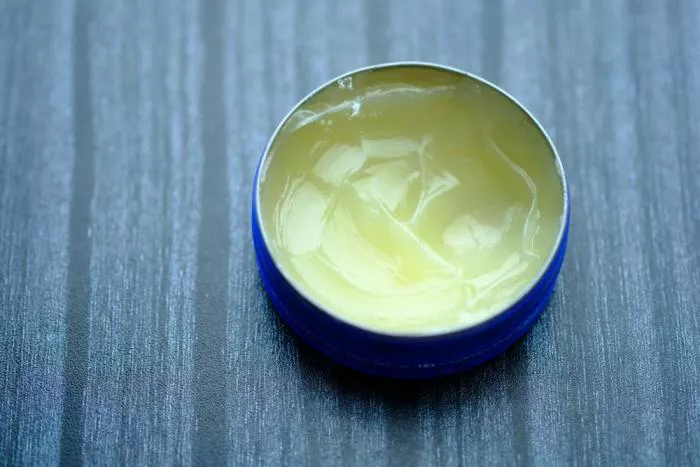Diaper rash is a common issue for babies. It can cause discomfort and irritation for your little one. Parents often look for effective solutions to soothe this condition. One product frequently discussed is petroleum jelly. This article will explore whether petroleum jelly is good for diaper rash. We will look at its benefits, how to use it, and other alternatives.
Understanding Diaper Rash
Diaper rash occurs when a baby’s skin becomes irritated. It often appears as red patches on the buttocks, thighs, and genital area. Several factors can contribute to diaper rash. These include:
Moisture: Diapers can trap moisture, leading to skin irritation.
Friction: Rubbing against the diaper can cause irritation.
Irritants: Baby wipes, soaps, or the diaper material itself can trigger rashes.
Infections: Fungal or bacterial infections can worsen the condition.
What is Petroleum Jelly?
Petroleum jelly, also known as petrolatum, is a thick, greasy substance. It is derived from oil refining. This product has been used for over 150 years for various purposes, including skin care. Many people use it to create a protective barrier on the skin.
Benefits of Petroleum Jelly for Diaper Rash
Petroleum jelly has several benefits that can help manage diaper rash. Here are some key points:
1. Moisture Barrier
Petroleum jelly creates a barrier on the skin. This barrier helps lock in moisture and keep out irritants. By applying it to your baby’s skin, you can protect the affected area from further irritation.
2. Reduces Friction
The greasy texture of petroleum jelly reduces friction. When your baby moves, the jelly helps prevent skin rubbing against the diaper. This can be especially helpful if your baby is active or crawling.
3. Soothing Effect
Petroleum jelly can have a soothing effect on irritated skin. While it does not contain any medicated ingredients, it helps keep the skin hydrated. This can promote healing and reduce discomfort.
4. Easy to Apply
Petroleum jelly is easy to apply. A small amount can be spread over the affected area. It is also readily available at most drugstores and supermarkets.
How to Use Petroleum Jelly for Diaper Rash
Using petroleum jelly for diaper rash is simple. Here are some steps to follow:
Clean the Area: Start by gently cleaning your baby’s bottom. Use warm water and a mild soap. Avoid wipes that contain alcohol or fragrances, as these can irritate the skin further.
Pat Dry: After cleaning, gently pat the area dry with a soft cloth. Avoid rubbing, as this can cause more irritation.
Apply Petroleum Jelly: Take a small amount of petroleum jelly and apply it directly to the affected area. Ensure that the skin is well-coated but not excessively thick.
Reapply as Needed: You can reapply the petroleum jelly during diaper changes. This will help maintain the moisture barrier and protect the skin.
Precautions When Using Petroleum Jelly
While petroleum jelly can be effective, there are some precautions to consider:
Check for Allergies: Although rare, some babies may be allergic to petroleum jelly. Test a small amount on a different part of the skin first.
Use Sparingly: Too much petroleum jelly can trap moisture and worsen the rash. Use just enough to create a thin barrier.
Monitor for Infection: If the rash worsens or shows signs of infection (such as pus or increased redness), consult a pediatrician.
Alternative Treatments for Diaper Rash
While petroleum jelly can be helpful, other treatments can also relieve diaper rash. Here are some alternatives:
1. Zinc Oxide Creams
Zinc oxide creams are widely used for diaper rash. They create a thick barrier on the skin and help reduce inflammation. These creams often contain additional ingredients that promote healing.
2. Aloe Vera
Aloe vera is known for its soothing properties. It can help hydrate the skin and reduce redness. You can use pure aloe vera gel to soothe diaper rash.
3. Coconut Oil
Coconut oil has natural antibacterial properties. It can be used as a moisturizer and has been shown to help with diaper rash. Applying a thin layer can keep the skin hydrated.
4. Change Diapers Frequently
Frequent diaper changes can help prevent and treat diaper rash. Keeping the area dry and clean is essential in reducing irritation.
When to Consult a Pediatrician
If diaper rash persists despite home treatment, consult your pediatrician. You should seek medical advice if:
- The rash does not improve after a few days.
- The rash appears severe or has blisters.
- You notice signs of infection, such as increased redness, swelling, or pus.
- The baby shows signs of pain or discomfort when touching the area.
Conclusion
In summary, petroleum jelly can be a helpful option for treating diaper rash. Its moisture barrier, soothing effect, and ease of use make it a popular choice among parents. However, it is essential to use it correctly and monitor your baby’s skin condition.
Always consider alternative treatments if needed, and do not hesitate to seek professional advice when necessary. Keeping your baby’s skin healthy and comfortable is the ultimate goal, and using the right products can help you achieve that.
Related topics:


